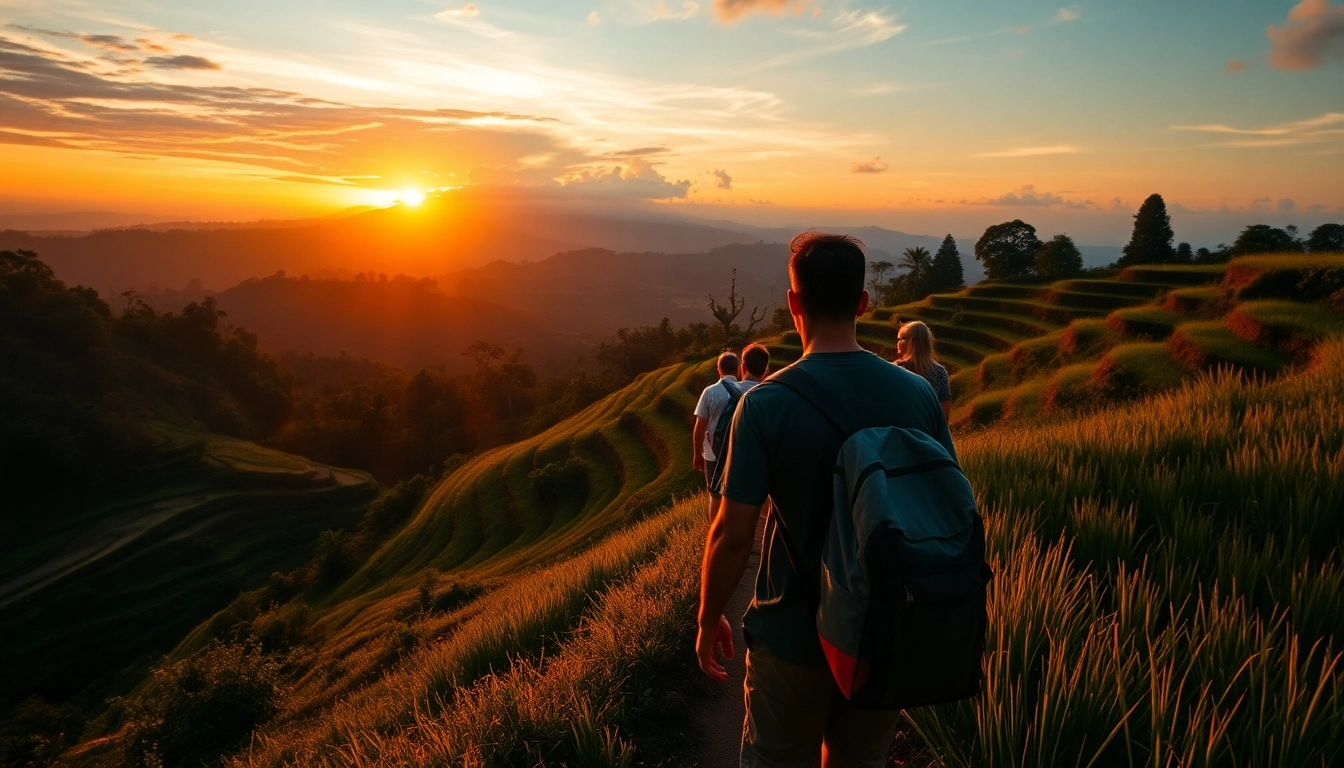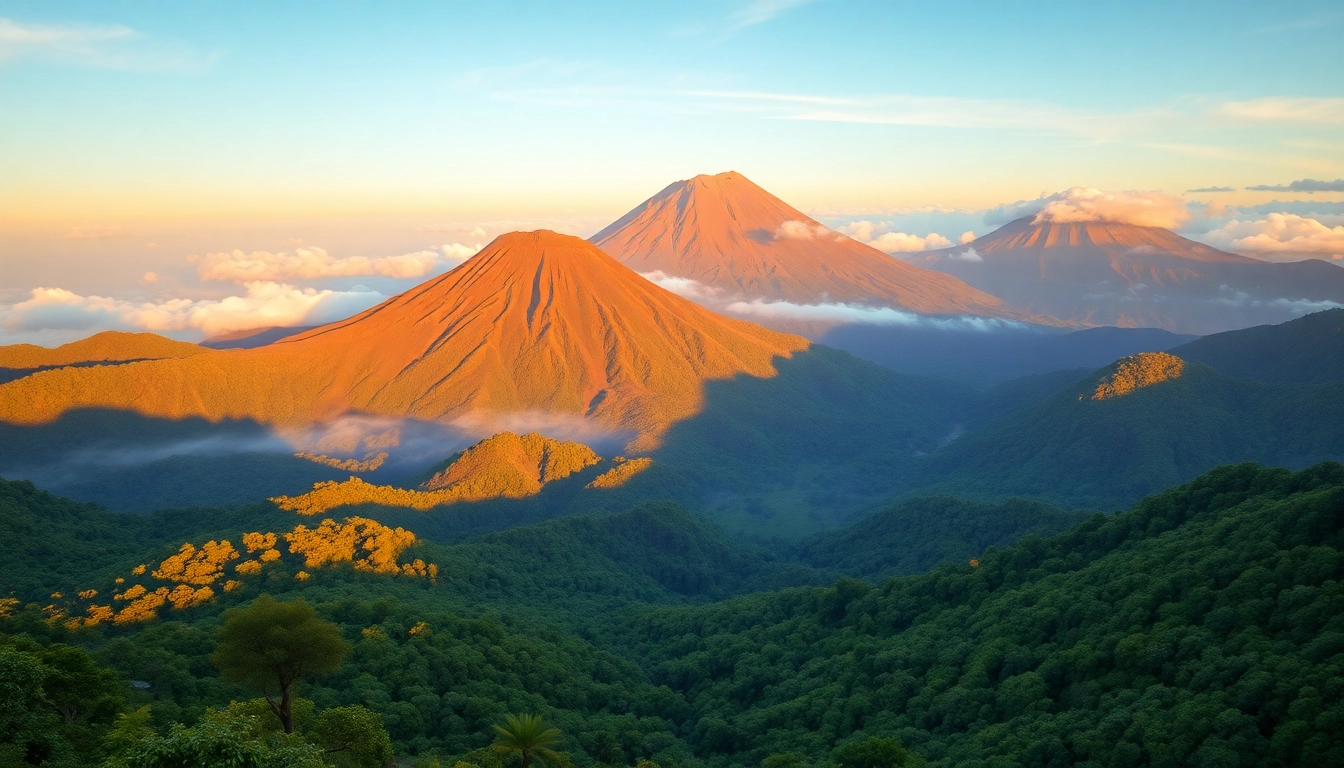Understanding Lombok: Essential Background and Context
Lombok, an island part of Indonesia’s vibrant Nusa Tenggara Barat province, offers an enriching blend of natural beauty, cultural heritage, and traditional customs. For travelers seeking an authentic Indonesian experience, grasping the island’s historical and cultural roots is crucial. Lombok’s history is deeply intertwined with the broader tapestry of Indonesian history, reflecting centuries of local kingdoms, maritime trading, and colonial influences. The island’s culture is characterized by its unique Sasak ethnicity, which has preserved distinct customs, rituals, and language that set Lombok apart from its neighboring Bali and Sumbawa.
Natural attractions, such as Mount Rinjani—the second-highest volcano in Indonesia—lush rice terraces, pristine beaches, and vibrant coral reefs, make Lombok a haven for eco-tourism and adventure enthusiasts. The island’s diverse topography allows for a wide array of outdoor activities, from mountain trekking to snorkeling, thereby appealing to a broad spectrum of travelers.
Historical and Cultural Overview of Lombok
Lombok’s history dates back centuries, with evidence of Hindu and Buddhist influences before the island embraced Islam through the spread of the Sasak population. The Sultanate of Lombok thrived during the 17th and 18th centuries, fostering art, trade, and religious practices still visible today. Colonial influences from the Dutch period introduced new administrative and cultural elements, some of which remain embedded in local customs.
The Sasak people are the predominant ethnic group, known for their warm hospitality, traditional weaving, and unique martial arts like Pencak Silat Sasak. Festivals such as the Bau Nyale—whale hunting festival celebrated annually—highlight the island’s rich traditions and spiritual beliefs. Visitors can explore local markets, ancient mosques, and traditional villages to gain deep insights into Lombok’s cultural fabric.
In contemporary times, Lombok’s culture balances tradition with modern influences, creating a dynamic environment where local customs coexist with tourism-driven development. Respectful engagement with local communities through responsible tourism enhances the authenticity of your experience and supports cultural preservation.
Geographical Highlights and Natural Attractions
Lombok’s geography is marked by diverse landscapes that range from rugged volcanic mountains to tranquil beaches and dense forests. The iconic Mount Rinjani, standing at 3,726 meters, is a major draw for trekkers and adventurers. The Rinjani National Park encompasses crater lakes, hot springs, and waterfalls, offering spectacular scenery and challenging hikes suited for all levels.
Beyond the volcano, Lombok boasts stunning beaches like Senggigi, Kuta, and Pink Beach, which are renowned for their white sands, clear waters, and vibrant marine ecosystems. The Gili Islands—Gili Trawangan, Gili Air, and Gili Meno—are off the coast, famous for their coral reefs, snorkeling, and laid-back vibe, perfect for relaxation and underwater exploration.
The island’s rolling rice terraces, such as those in Segara and Sukarara villages, showcase traditional agricultural practices and provide picturesque landscapes for photography and cultural immersion. Dense tropical forests and waterfalls, like Tiu Kelep and Sendang Gile, enrich Lombok’s ecological diversity and offer serene retreats for nature lovers.
Understanding these geographical features allows travelers to tailor their activities to the best seasons and conditions, ensuring a safe and enjoyable visit. Accessing these attractions typically involves a combination of local transportation modes, which will be covered in subsequent sections.
Local Customs, Traditions, and Language Tips
The Sasak culture maintains rich oral traditions, vibrant festivals, and customary ceremonies that reflect their Islamic faith intertwined with indigenous beliefs. Visitors should observe modest dress, especially when visiting religious sites, and be respectful of local customs.
Lombok’s language, Bahasa Sasak, coexists with Bahasa Indonesia and English, which are commonly spoken in tourist areas. Learning basic greetings or phrases in Bahasa Sasak can foster goodwill and enrich interactions with local residents.
Traditional crafts such as weaving songket textiles and pottery are prominent, and purchasing directly from artisans supports local livelihoods. Participating in cultural activities like embroidery or dance performances offers immersive experiences.
Respectful engagement, participation in local festivals, and understanding social norms—such as greeting elders with a slight bow or handshake—enhance cultural appreciation. These customs form an integral part of your Lombok journey, encouraging responsible and mindful tourism.
Planning Your Trip: Preparing a Detailed Lombok guide
Best Time to Visit and Weather Insights
Determining the optimal time to visit Lombok depends on your preferred activities and tolerance for weather variations. The dry season, spanning from May to September, offers sunny days, clear skies, and favorable conditions for trekking, beach activities, and outdoor excursions. July and August are peak tourist months, so plan accordingly to avoid overcrowding and higher prices.
The wet season, from November to April, brings periodic rainstorms, which can disrupt outdoor plans but also results in lush landscapes and fewer visitors. Shoulder months like April and October may balance good weather with fewer crowds. Understanding seasonal patterns assists in packing appropriately, securing accommodations, and planning activities.
Key Transportation Options and Getting Around
Lombok’s transportation infrastructure comprises domestic flights, ferries, taxis, motorbike rentals, and arranged tours. Ngurah Rai International Airport in Bali offers direct flights to Lombok’s Lombok International Airport, facilitating quick access for international visitors.
Once on the island, travelers can choose motorbike rentals for flexibility or hire private drivers for comfort and local insights. Public transportation, such as public minivans called “bemo,” are available but less convenient for tourists unfamiliar with local routes. Ferries connect Lombok to Bali and the Gili Islands, with frequent departures matching tourist schedules.
For intra-island travel, organized tours or car rentals are recommended, especially for distant or rugged destinations like Mount Rinjani or remote beaches. Effective planning of transportation ensures timely arrivals, safety, and a smoother travel experience.
Must-know Travel Documents and Safety Precautions
Entry requirements typically include a valid passport with at least six months’ validity; Indonesian visas are granted on arrival for citizens of many countries for up to 30 days. Check the latest visa regulations before your trip.
Travelers should carry photocopies of important documents, register with local authorities if necessary, and stay informed about current safety advisories. Health precautions include vaccinations for hepatitis A and B, typhoid, and optional typhoid, especially if venturing into rural areas.
Insurance coverage that includes medical emergencies and unforeseen cancellations is highly recommended. Staying vigilant against petty theft, respecting local laws, and following safety guidelines during outdoor activities contribute to a secure trip.
Top Destinations and Activities in Lombok
Beaches, Snorkeling, and Diving Spots
Lombok boasts some of Indonesia’s most beautiful beaches, including Senggigi, known for its sunset views; Kuta Beach, famous for surfing and vibrant nightlife; and Pink Beach, distinguished by its unique pink-colored sand. These beaches offer excellent opportunities for swimming, sunbathing, and water sports.
The Gili Islands are renowned for crystal-clear waters, vibrant coral reefs, and diverse marine life, making them ideal for snorkeling and diving. Gili Trawangan is popular among backpackers and party-goers, while Gili Air and Gili Meno appeal to those seeking tranquility and eco-tourism.
Guided snorkeling tours and PADI-certified dive operators provide safety and expert insights into the vibrant underwater ecosystems. Early mornings and calm weather conditions yield the best snorkeling experiences.
Hiking Trails and Mountain Adventures
Mount Rinjani’s challenging trails attract experienced trekkers, offering multi-day adventures with breathtaking views, crater lakes, and hot springs. Guided hikes are advisable due to the mountain’s unpredictable weather and rugged terrain.
For a less strenuous experience, the Anjani Village Trek provides an introduction to Rinjani’s foothills, traditional Sasak culture, and scenic rice terraces. Shorter hikes around waterfalls like Tiu Kelep and Sendang Gile also provide adrenaline and immersion into lush ecosystems.
Preparation for mountain activities includes acclimatization, appropriate gear, and awareness of altitude sickness symptoms. Local guides and tour agencies facilitate safe, informed excursions.
Cultural Sites and Traditional Villages
Sambah Traditional Village showcases the ancient Sasak architecture and weaving techniques. Visitors can witness local artisans crafting textiles, participate in traditional ceremonies, and learn about village life.
Pura Meru and Sare Manten are historic mosques and temples that reflect Lombok’s religious heritage. The ancient temples are often the centers of festivals and community events.
Exploring these sites offers contextual understanding of Lombok’s spiritual and cultural identity, enriching your travel experience and fostering respectful interactions.
Local Cuisine and Cultural Experiences
Popular Dishes and Food Markets
Lombok’s culinary scene features a variety of flavors rooted in local ingredients and traditional recipes. Sate Rembiga, a spicy grilled meat, and Plecing Kangkung, a fresh water spinach salad, exemplify local taste profiles—bold, savory, and tangy.
Food markets like Pasar Mandalika and Senggigi Market are hotspots for authentic dishes, street snacks, and fresh produce. Sampling traditional foods from street vendors supports local vendors and provides a genuine taste of Lombok’s diverse flavors.
Vegetarian-friendly options and seafood are abundant, with freshly caught fish, prawns, and crab served in various authentic and modern presentations.
Festivals and Cultural Events Calendar
Participating in festivals such as Bau Nyale (wave of worms) festival, held annually in February, celebrates the legend of Prince Jayasakti and the sea goddess. During this event, locals dive for sea worms, which are considered a delicacy and cultural symbol.
Other events include Islamic celebrations like Eid al-Fitr and local harvest festivals, where traditional music, dance, and culinary displays abound. Attending these festivities offers immersive cultural learning and meaningful engagement with residents.
Engaging with Local Communities Respectfully
Respectful interaction involves dressing modestly, requesting permission before photographing locals, and participating positively in cultural activities. Learning basic greetings in Bahasa Sasak and understanding local etiquette helps build rapport.
Supporting local artisans and community-based tourism initiatives promotes sustainable development. Volunteer opportunities, responsible shopping, and avoiding disruptive behavior ensure your visit contributes positively to Lombok’s cultural preservation and social well-being.
Practical Tips for a Smoother Trip: Your Lombok guide
Money Matters: Currency, Payments, and Budgeting
The Indonesian Rupiah (IDR) is the official currency. ATMs are widely available in main towns, but carrying cash for remote areas is advisable. Credit cards are accepted in select hotels and restaurants, but cash transactions prevail in local markets.
Budget travelers can find affordable accommodations, street meals, and transport options, while luxury resorts and private tours offer premium experiences. Planning your daily expenses and having contingency funds ensures financial comfort during your stay.
Health and Wellness: Vaccinations and Medical Care
Prior to traveling, consult a healthcare provider for recommended vaccinations, including hepatitis A and B, typhoid, and tetanus. Carry a basic first aid kit, including antihistamines, antiseptics, and sun protection. Drinking bottled or purified water minimizes health risks.
In case of medical emergencies, facilities are available in major towns and near tourist attractions. Travel insurance with coverage for medical evacuation is strongly recommended for peace of mind.
Environmental Responsibility and Eco-tourism Practices
Preserving Lombok’s natural beauty requires conscious efforts such as reducing plastic waste, avoiding single-use plastics, and participating in eco-friendly tours. Respect wildlife and coral reefs by not touching or removing marine life.
Opt for accommodations and operators committed to sustainability, and support community-based tourism initiatives. Responsible tourism ensures that future generations can enjoy Lombok’s pristine environment and vibrant culture.

